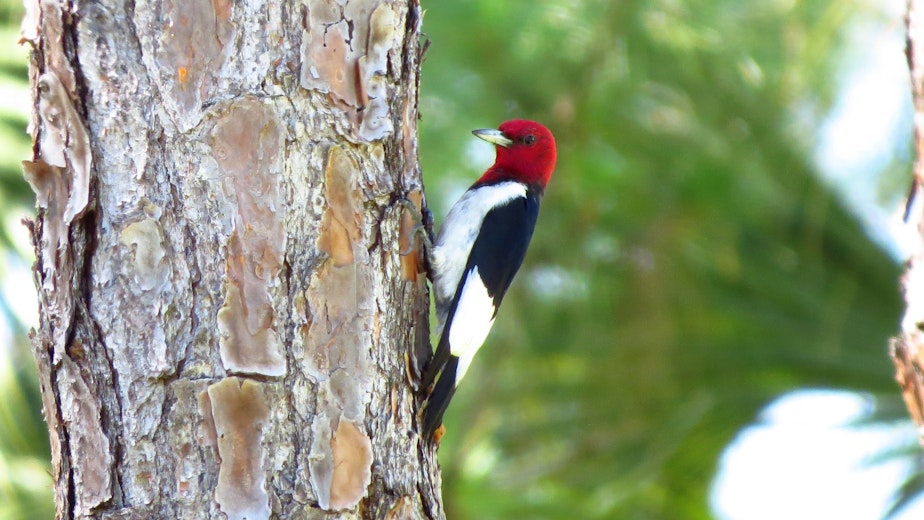Hard Knocks: Lessons from the woodpecker

Woodpeckers will peck at a tree up to 12,000 times a day. Just one woodpecker peck produces about 15 times the force needed to give a human a concussion.
So, how do woodpeckers bang their heads so much, and so hard, and not come away with brain damage?
Woodpeckers aren’t the only animals that bang their heads. Bighorn sheep run head first at each other at speeds up to 40 miles per hour. The males headbutt like this during mating season - they’ll do it for a couple of hours a day - to establish dominance and access to females. Most species in the animal kingdom that butt heads do it during their mating season. But woodpeckers do it year round to gather food, make nests and attract a mate.
One of the reasons woodpeckers can bang their heads repeatedly and not turn their brains into mush is their amazing body structure or morphology. Their beaks are made of keratin that helps absorb the impact of blows. But the biggest anti-brain trauma feature in the woodpecker is its tongue. Bird tongues are made up of bones, cartilage and muscle. Yes, bones in their tongue!
Bird tongues are often called the hyoid apparatus. It’s how woodpeckers extend their tongues to reach insects deep inside the holes they drill. Woodpecker tongues are long, sticking out five inches or more. But with a long tongue like that you have to have a place to put it. This hyoid apparatus of the woodpecker travels below the jaw, wraps around the back of the head and runs all the way toward the nostrils. By wrapping around the entire head like this, scientists think that the hyoid apparatus provides extra cushioning of the head during pecking. It acts sort of like a seatbelt. The hyoid stops the head, and, especially the brain, from jolting around too much.
Traumatic brain injuries have become big news in American football and other sports. Woodpeckers and bighorn sheep have inspired the development of sports equipment that researchers hope will reduce traumatic brain injuries in athletes.
Dr. David Smith at Cincinnati Children’s Hospital came up with the idea of a special C-shaped collar that wraps around the neck. It mimics the effects of the hyoid in the woodpecker and actually gently presses on the jugular vein so that more blood is sent to the brain. The extra blood expands the brain making it fit tighter in the skull, meaning less room for the brain to “slosh” around. Studies on high school football and hockey players showed evidence that the collar reduces brain injury from repeated impacts. In 2021, the Food and Drug Administration approved marketing of the device called the Q-collar for athletes 13 years and older.
Sponsored
Recommended links from Chris Morgan:
FDA Authorizes Marketing of Novel Device to Help Protect Athletes’ Brains During Head Impacts
Science Daily: Woodpeckers show signs of possible brain damage, but that might not be a bad thing
Popular Science: Woodpecker inspired football helmet
THE WILD is a production of KUOW in Seattle in partnership with Chris Morgan and Wildlife Media. It is produced by Matt Martin and edited by Jim Gates. It is hosted, produced and written by Chris Morgan. Fact checking by Apryle Craig. Our theme music is by Michael Parker.





